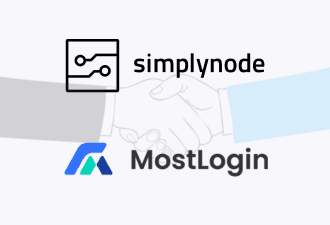GEO/AEO Auditing Inside MostLogin: Reproducing Real User Results


AEO (Answer Engine Optimization) is the practice of making your brand the most credible, unambiguous candidate for inclusion in AI-generated answers - across Google’s AI Overviews, ChatGPT, Perplexity, Copilot, Gemini, and similar systems. It emphasizes clear entities, question-answer content, trustworthy citations, structured data (schema), up-to-date facts (pricing, specs, locations), and strong author signals so engines can safely quote you.
GEO (Geographic) auditing is the discipline of verifying that those answers and classic SERP modules appear the way a real user in a specific location would see them by controlling IP/ASN, DNS resolvers, language, timezone, and signed-in state. In short, AEO determines what gets said and why you’re cited; GEO ensures who sees it and how it renders in each market - from AI Overviews to local packs and shopping units. Together they align content quality with location-accurate delivery so your inclusion metrics reflect genuine user reality.
Why AEO/GEO auditing matters now
Google’s AI Overviews place generative summaries at the top of the SERP for hundreds of millions of U.S. users (and also worldwide European countries too) and continue to expand globally. That changes how visibility and traffic are allocated—and raises the bar for geo-accurate testing.
At the same time, zero-click behavior is rising. In March 2025, U.S. zero-click searches increased to ~27.2% (from ~24.4% a year earlier), while organic clicks fell (40.3% vs 44.2% YoY). If your audits aren’t reproducing a true U.S. user path, your inclusion metrics in AI Overviews, modules, and classic blue links will be noisy.
Bottom line: AEO (Answer Engine Optimization) and GEO testing require browser profiles that behave like U.S. consumers—network, resolver, and fingerprint included.
Profile + proxy pairing for U.S. regions, or any other country (MostLogin + mobile IPs)
MostLogin lets you create isolated browser profiles with distinct fingerprints, storage, and proxy settings—ideal for multi-account and country-specific tests. Configure one profile per U.S. locale you care about (e.g., New York, Chicago, Dallas, Los Angeles).
Use U.S. mobile IPs (4G/5G/LTE) for higher “consumer-like” trust:
- Carrier ASN & CGNAT patterns better match real handheld traffic.
- Sticky sessions allow multi-step test flows (query → refine → click) without mid-journey IP swaps.
- Rotation on demand lets you test inclusion variability across fresh IPs in the same market.
Recommended sources:
- US 4G/5G mobile IPs — choose state/city pools and sticky/rotation modes that map to your test plan.
Anchor: US 4G/5G mobile IPs
Profile setup checklist (per locale):
- Create a new MostLogin profile; name it with the city/region.
- Set the proxy to a U.S. 4G/5G endpoint for that city (HTTP(S) for browser testing is fine; SOCKS5 is optional unless you test UDP-sensitive flows).
- Align timezone and language with the locale (en-US; regional time).
- Keep the profile clean: no previous cookies, extensions, or logged-in states.
WebRTC/DNS hygiene inside the profile
Two silent failure modes break GEO tests: WebRTC leaks and DNS leaks. Both can reveal your real network path even when the visible IP looks U.S.
WebRTC
WebRTC can expose local and public IPs via STUN. If misconfigured, websites can detect a non-U.S. address despite a U.S. proxy. Validate and, if necessary, limit WebRTC at the profile/policy level and verify with a reputable test.
Actions:
- In MostLogin, keep WebRTC constrained per profile or use an allowlist approach if you need WebRTC for specific tests (voice/video).
- Re-check after browser updates.
DNS
Split-tunnel configurations and OS precedence can send DNS queries outside the proxy/VPN path. Ensure the profile resolves via U.S. resolvers associated with your proxy route. Some device/agent tunnels require explicit local domain fallback or exclusion rules; understand how your stack handles DNS when split tunneling is enabled.
Actions:
- Confirm no DNS requests hit your ISP or a non-U.S. resolver while a U.S. proxy is active.
- Prefer a proxy/VPN path that controls both TCP and UDP DNS resolution to avoid partial coverage.DNS Leak Test — verify resolvers follow the proxy path.
- Re-test after toggling IPv6 or changing OS network adapters; DNS behavior can shift with system changes.
A repeatable U.S. audit plan you can trust
1) Establish a clean baseline (per locale)
- Open the new profile without a proxy; record “home” IP/resolver.
- Enable the U.S. proxy; open What is my IP and capture:
- Public IP & ASN (should be a U.S. mobile carrier or a U.S. network you intend to test)
- City/region (geolocation)
- Public IP & ASN (should be a U.S. mobile carrier or a U.S. network you intend to test)
- Run DNS Leak Test to confirm resolvers are U.S. and aligned with the proxy path.
2) Define the AEO/GEO question set
Create a consistent corpus to avoid cherry-picking:
- 20–50 queries across core categories: brand, product, intent (commercial, informational), and competitor comparisons.
- Include local-sensitive queries (e.g., “best [category] near me”, “store hours [city]”).
Why fixed sets? AI Overviews and other AI features can change query-by-query and over time; a stable set supports trend analysis.
3) Execute like a real user
- Session flow: query → refine → click where appropriate.
- Timing: allow a few seconds between actions; avoid robotic cadence.
- Stickiness: keep the same IP for the full query set unless you’re purposefully testing IP variability.
4) Capture the evidence
For each query:
- Presence of AI Overview block (Y/N).
- Your brand inclusion within AI Overview (citation or mention).
- Organic position of your property (if present).
- Any captchas or interstitials encountered (count + type).
- Notes on UI modules (local pack, shopping, news, perspectives).
5) Rotate and replicate
Change to a second U.S. IP in the same city, re-run the set, and compare:
- Differences in AI Overview inclusion
- Shifts in local packs or shopping modules
- Captcha frequency deltas
Repeat across two or three cities that matter for your business (e.g., East, Central, West).
KPIs that actually move decisions
- AI Overview Inclusion Rate (%): queries where your brand/site is cited or summarized in AI Overviews ÷ total queries. Track by city.
- Organic Visibility (% / avg. rank): classic blue-link presence alongside AI modules.
- Zero-Click Pressure (proxy metric): queries with AI Overview + no organic click performed during test. Rising zero-click rates make this vital for scenario planning
- Captcha Density (per 100 queries): signals risk from fingerprint, IP reputation, or rotation cadence.
- Resolver Integrity (%): test runs with DNS fully aligned to U.S. proxy; adjust until this is ≈100%.
- Session Half-Life (mins/queries): how long a profile can operate without challenges.
Troubleshooting matrix (fast triage)
Governance and repeatability
- Version your corpus: store the query list in Git; tag each audit with IP/ASN, city, timestamp.
- Record the path: screenshots or HTML captures of SERPs (with visible location indicators).
- Automate sanity checks in CI before each audit run:
- Hit What is my IP → assert “US + target city”
- Hit DNS Leak Test → assert U.S. resolvers only
Recommended U.S. setup patterns
- Single-city depth test: 3–5 sticky IPs (same metro) to measure variance across consumers in one market.
- Coast-to-coast sanity: 1 sticky IP per region (NYC, Chicago, Dallas, LA) for spot checks.
- Release validation: keep a golden profile+IP for weekly regression audits to detect feature rollouts that alter AEO inclusion. Google’s AI features evolve; watch for SERP/UI changes.
Putting it together
- Create a MostLogin profile per U.S. city; assign a U.S. 4G/5G proxy with sticky sessions.
- Confirm IP/ASN/geo with What is my IP and resolver integrity with DNS Leak Test.
Run your fixed AEO/GEO corpus; capture AI Overview presence and brand inclusion, organic ranks, and captcha events. - Rotate to a second U.S. mobile IP in the same city; repeat for variance checks.
- Track KPIs and regress weekly; watch for shifts as Google iterates AI features.
Toolbox (anchors)
- What is my IP — fast U.S. confirmation (IP/ASN/geo).
- DNS Leak Test — ensure resolvers don’t bleed outside the proxy path.
- P0f tester - to see p0f fingerprint of the proxy
- US 4G/5G mobile IPs — pick sticky city pools for reproducible audits.


